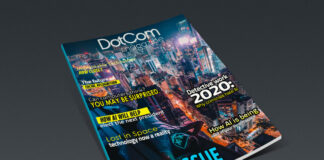In the fast-evolving world of business, AI in demand forecasting is emerging as a revolutionary force. The application of AI in demand forecasting is changing how companies predict and manage their inventory, resources, and overall operations. With its ability to analyze vast amounts of data, recognize patterns, and make predictions with greater accuracy, AI in demand forecasting enables businesses to make smarter decisions, reduce waste, and improve profitability. In this article, we will explore the top ten things you should be prepared for regarding how AI will change demand forecasting, and why this technology will be critical for businesses that want to stay competitive in the modern market.
1. AI Enhances Accuracy in Demand Predictions
One of the most significant benefits of AI in demand forecasting is its ability to provide highly accurate predictions. Traditional forecasting methods often rely on historical data, human intuition, and basic statistical models. While these approaches can work to some extent, they often fall short when faced with complex market dynamics. AI in demand forecasting uses advanced machine learning algorithms to analyze large datasets in real-time, identifying patterns and trends that humans may overlook. This allows businesses to generate more accurate predictions, reducing the risks associated with overstocking or understocking inventory. With better accuracy in forecasting, companies can optimize their supply chain and reduce costs associated with inventory management.
2. Real-Time Data Analysis for Dynamic Forecasting
The world of demand forecasting is no longer static, and businesses can no longer rely on yearly or quarterly data alone to make decisions. With AI in demand forecasting, real-time data becomes an invaluable asset. AI systems can process data from multiple sources in real time, including social media, consumer behavior, market trends, and even weather conditions, to adjust demand predictions instantly. This dynamic forecasting ability allows businesses to react quickly to changes in the market and adjust their strategies accordingly. Whether it’s a sudden spike in consumer interest or an unexpected disruption in the supply chain, AI in demand forecasting ensures that companies are always prepared for what’s ahead.
3. Improved Inventory Management
Effective inventory management is one of the most challenging aspects of running a business. Overstocking leads to high storage costs, while understocking can result in lost sales and customer dissatisfaction. With AI in demand forecasting, businesses can achieve a more precise balance between supply and demand. By analyzing historical data and real-time inputs, AI helps companies understand the optimal amount of inventory to maintain at any given time. This results in better stock turnover, lower holding costs, and reduced waste, all of which contribute to enhanced profitability and operational efficiency.
4. AI-Driven Personalization in Forecasting
Consumers today expect personalized experiences, and demand forecasting is no exception. AI in demand forecasting enables businesses to incorporate personalization into their predictions by analyzing individual customer behaviors and preferences. This personalized approach goes beyond generic sales data and tailors forecasts to specific customer segments, regional differences, or even seasonal trends. By understanding the nuances of different customer profiles, AI-driven demand forecasting can help businesses better meet customer expectations, optimize inventory distribution, and improve sales forecasting accuracy.
5. Automation of Demand Forecasting Processes
One of the most appealing aspects of AI in demand forecasting is the level of automation it brings to the process. Traditional demand forecasting methods often require significant time and manual effort to compile and analyze data. With AI, businesses can automate many of these tasks, saving both time and resources. The AI system can continuously monitor and process vast amounts of data, providing regular updates and adjusting forecasts automatically based on the latest trends. This automation not only increases efficiency but also allows employees to focus on more strategic tasks, such as analyzing results and optimizing business operations.
6. Better Demand Forecasting in Uncertainty
One of the key challenges businesses face is forecasting demand during periods of uncertainty, such as economic downturns, political instability, or global pandemics. AI in demand forecasting is particularly effective in handling these uncertain times. By using machine learning models, AI systems can account for complex variables and external factors that traditional methods might overlook. AI can identify patterns from a broader range of data sources and predict demand fluctuations with greater resilience. This means that companies can make more informed decisions even during uncertain times, ensuring that they can weather market volatility without significant losses.
7. Collaboration Across Departments
Demand forecasting doesn’t operate in a silo—it requires input from various departments, including sales, marketing, procurement, and logistics. With AI in demand forecasting, businesses can streamline collaboration across departments by providing a unified, data-driven approach to decision-making. AI systems can integrate data from all areas of the business, allowing teams to align on common goals and forecast assumptions. This collaborative approach fosters better communication, reduces discrepancies in forecasting, and ensures that everyone is working from the same set of data.
8. AI and the Internet of Things (IoT) for Smarter Forecasting
The combination of AI in demand forecasting and IoT devices creates powerful opportunities for smarter and more responsive forecasting. IoT devices, such as sensors in warehouses, production lines, and retail environments, provide real-time data on stock levels, equipment usage, and product movement. AI systems can analyze this IoT data in conjunction with other market data to generate real-time demand predictions that are highly accurate. For instance, sensors in a store can track customer interactions with products, which is then analyzed by AI to predict future demand trends. This connection between AI and IoT makes demand forecasting more responsive, adaptive, and precise than ever before.
9. Cost Reduction and Efficiency Gains
AI in demand forecasting offers significant opportunities for cost reduction and efficiency gains. By improving the accuracy of demand predictions, AI helps businesses minimize the costs associated with excess inventory, stockouts, and supply chain disruptions. Additionally, AI-driven forecasting optimizes production schedules, labor allocation, and transportation planning, which can lead to further cost savings. As businesses streamline their operations with AI, they are able to allocate resources more efficiently, reduce waste, and improve their overall profitability. In a competitive market, these cost reductions are critical for staying ahead of competitors.
10. The Future of Demand Forecasting
Looking ahead, the role of AI in demand forecasting will continue to evolve as technology advances. Future AI models are expected to become even more accurate, with the ability to incorporate more complex data sets and predict demand across an even wider range of industries and product categories. Moreover, AI will likely enable businesses to forecast demand with even greater granularity, allowing for highly localized predictions, smaller product segments, and more tailored strategies. As AI continues to improve, businesses that embrace these technologies early will have a significant advantage in optimizing their supply chains, customer experiences, and overall operations.
Conclusion:
AI in demand forecasting is transforming how businesses predict, manage, and optimize their operations. From real-time data analysis and personalized forecasting to cost reductions and smarter collaboration, the impact of AI is undeniable. As companies continue to embrace AI-driven demand forecasting, they will benefit from improved accuracy, better inventory management, and enhanced operational efficiency. The ten aspects outlined in this article demonstrate just how crucial AI in demand forecasting is for the future of business. By staying prepared and adopting AI technologies, businesses can not only survive in an increasingly competitive landscape but thrive as they anticipate customer demand with greater precision and confidence.














